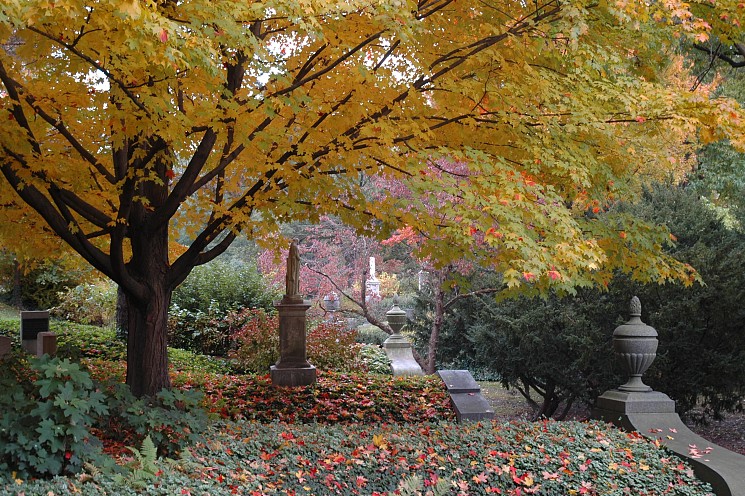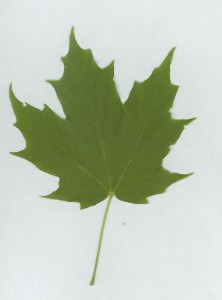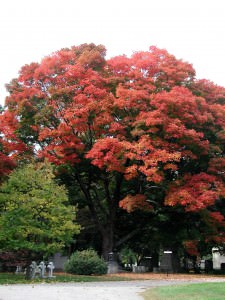Acer saccharum

Every leaf speaks bliss to me
Fluttering from the autumn tree.
-Emily Bronte
One of our trees unexcelled for autumn color is our native sugar maple, Acer saccharum. This same tree is also known to some as rock maple and/or hard maple. Worldwide, there are more than 100 different species of maples in the genus Acer, but for many New Englanders, there is a special love for our sugar maples whose leaves annually display brilliant oranges, vivid reds and golden yellows. It is their fall foliage that creates visual joy throughout many of our cherished landscapes, large or small.

These are large shade-trees, attaining a height of 60-to-75′, and having an upright-oval to rounded shape. The individual leaves are arranged opposite each other on the stems, are 3-6″ long and wide, and most often have five pointed lobes. There is an image of a prototypical sugar maple leaf on the Canadian flag. The tree’s flowers are tiny, inconspicuous, chartreuse-colored, occurring in April before the leaves emerge. The winged, 1-1 ½”, seeds, known as samaras, occur in attached, opposite pairs which form a horseshoe-shape, and often ripen in September. These are eaten by evening grosbeaks, nuthatches, finches and numerous other kinds of birds along with squirrels, chipmunks and other mammals.
The wood of sugar maples is highly prized for multiple purposes. It long has been a favorite of furniture makers, is often used for hardwood flooring, and is also used to make many musical instruments such as violins, violas, cellos, guitars, drums, etc. For those who use wood for heating, maple has a high heating value, exceeded by only a few other woods; dogwood, hickory, oak, and beech. And of course this is the maple of choice for collecting sap to produce maple syrup. Interestingly Massachusetts, according to the US Department of Agriculture is the ninth-most productive maple syrup-producing state, behind Vermont, New York, Maine, Wisconsin, Ohio, Michigan, Pennsylvania, and New Hampshire.

A sugar maple located on Eagle Avenue in its fall glory.
Here at Mount Auburn we do not use our plentiful sugar maples to produce maple syrup but do relish in their autumnal splendor. We quote from Henry David Thoreau (1817-1862) who wrote in his Journal from 1858, “We will not ask them to yield us sugar in the spring, while they yield us so fair a prospect in the autumn. Wealth may be the inheritance of few in the houses, but… all children alike can revel in this golden harvest….This October festival costs no powder nor ringing of bells, but every tree is a liberty-pole on which a thousand bright flags are run up….this …living institution which needs no repairing nor repainting, which is continually enlarged and repaired by its growth…” On your autumn visits to Mount Auburn you are sure to be enthralled by our over 300 sugar maples whose leaves create a changing, ephemeral, abstract canvas.
*This Horticulture Highlight was originally published in the October 2011 issue of the Friends of Mount Auburn electronic newsletter.
Leave a Reply